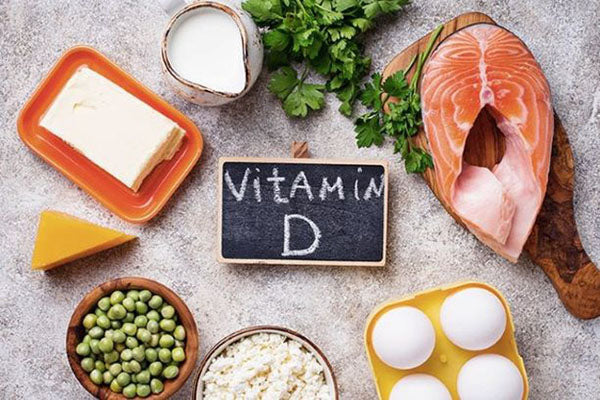
Did you know what the factors affecting vitamin D production on your skin are? The amount of vitamin D the body produces doesn't just depend on the type of food you consume or the amount of time in the sun.
Read: The Relationship Between Vitamin D and Fertility
This process is particular and depends on factors that have nothing to do with your diet or behavior, such as your physical and genetic structure. Let's find out more in this article, but first, let's take a look at the recommended vitamin D dosages below!
Recommended Vitamin D Dosages
Recommended Daily Allowance (RDA) of vitamin D is measured in international units (IU). According to data released in 2010, the RDA of vitamin D is 600 IU for people between the ages of 1-70 years.
On the other hand, it is better for babies to take 400 IU of vitamin D daily. Pregnant and lactating women need to get 600-2000 IU daily, depending on their state of health. Similarly, for people over the age of 71, this RDA changes to 800 IU and above.
Factors Affecting Vitamin D Production In Your Skin
Here are the 6 factors affecting vitamin D production in your skin:
1. Skin Tone And Tan Level
The first factors affecting vitamin D production in your skin are skin tone and tan level. Ever wondered why light-skinned people are more at risk of exposure to UV rays and skin cancer? It is because of their melanin content. And this fact is also important in the production of vitamin D.
Those with pale skin reach an equilibrium point of vitamin D production approximately after 15-20 minutes of exposure. Further exposure will cause harm.
This time span is doubled or even tripled in the case of dark-skinned people, of course, depending on the level of melanin.
So, if you fall into the first category, expose yourself to the sun for 15 minutes or less, wearing only a small amount of clothing. Using a tanning bed is an option, but avoid it if you can.
Those who fall into the second category can be outside longer. But don't overdo it. Stop the process as soon as you notice your skin turns pink.
2. Time Spent on the Sun
The amount of time you spend directly in the sun is also an important factor.
Those who spend relatively less time outside are more likely to experience vitamin D deficiency compared to others. But, as described earlier, this depends entirely on the type and color of your skin. Do not be in the sun for more than the required duration. It can cause burns and even cause skin cancer.
Your body is not a machine. It will only produce a limited amount of vitamin D per day, even if you spend the whole day in the sun.
To find out if you have received a vitamin D quota for the day, look at your skin. If it has turned pink, you are done. Although chocolate is good, don't let it harm your skin.
3. Weather Conditions
Weather is also included as a factor affecting vitamin D production in your skin because weather plays an important role in determining how much vitamin D your body can produce.
The cloudy day, although relatively cold, is very deceptive. You may not know this, but even cloudy days can cause sunburn. This is because although clouds block infrared rays, they can only filter out some UV rays but cannot block them completely.
Also, snow, sand, and water reflect UV radiation, increasing its intensity, regardless of whether the weather is sunny or not. UV penetration is reduced to a low level in areas with air pollution such as cities surrounded by hills.
4. Latitude And Altitude
The next factors affecting vitamin D production in your skin are latitude and altitude. Here is some geography for you, folks.
I guess you know the most powerful solar radiation at the equator decreases as we head towards the poles. Therefore, UV radiation is as much as 4 to 5 times in areas falling on the equator when compared to the Antarctic and Arctic circles.
This effect also peaks at higher altitudes when compared to plains and seas because the atmosphere absorbs it much less. It may sound absurd, but you are more at risk of sunburn in the mountains than on ordinary soil.
5. Seasons
This is by far the most obvious factor associated with UV radiation. Summer means more sunshine, which means more vitamin D. However, take care of your vitamin D levels during the winter as vitamin D levels drop by as much as 50% during the season. So, go ahead, sunbathe.
6. Today's Time
The optimal time for sunbathing is between 07.00-09. This time is perfect because even a short exposure to UV rays can give you enough vitamin D for the day.
That’s it article about 6 factors affecting vitamin D production in your skin, may it be useful!









